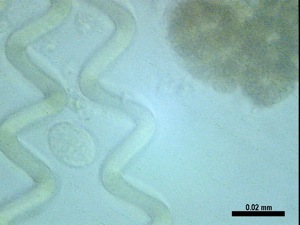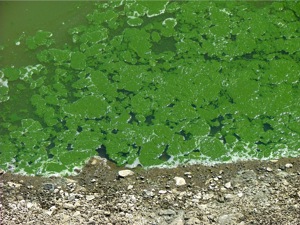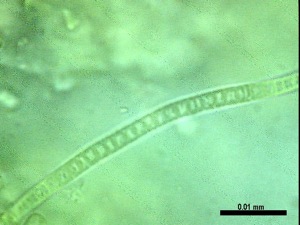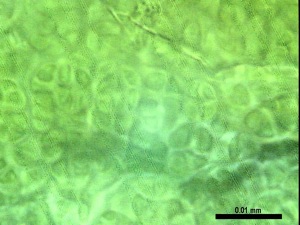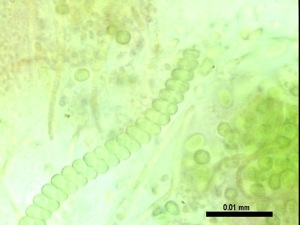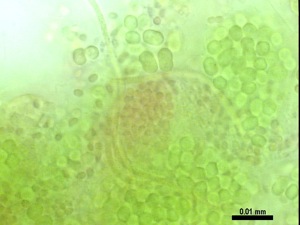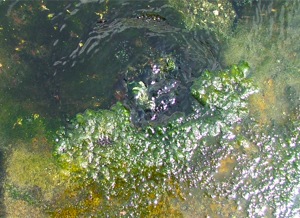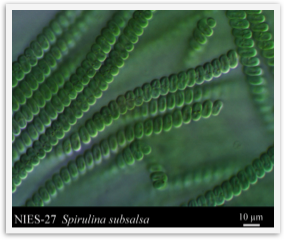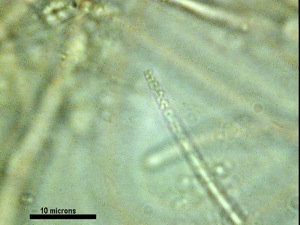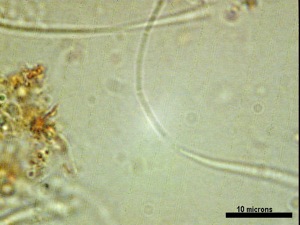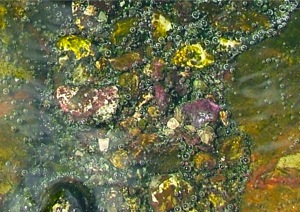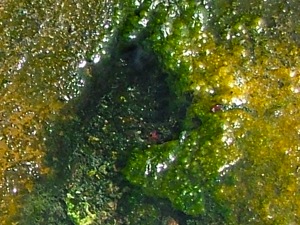

Magadi Hot Springs
One of the tourist draws of the Magadi area is the number of hot springs that feed the lake. Living in these springs is a number of algae and bacteria, and here I would like to briefly categorize the different types you might find out there. Essentially I tried to sample as many distinctive forms around the hot spring as possible, but, being a Geologist, I’m sure a biologically oriented person would be able to find many more then I did. So, think of this as a brief introduction to the things in the springs, and realize there are probably many more waiting to make your acquaintance.



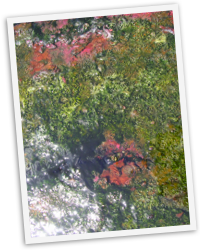

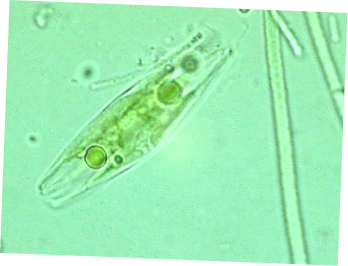


These ridges are pretty striking when you are out at the hotsprings. They are about 1 inch high at the apex, and as can be seen in the above photo, they are very linear and growth is pretty restricted to right around the ridge. The ridges are in standing water away from the vigorous springs, and the growth around them are green-brown in color. My guess is that these represent growth around fractures where brines can seep up. Under the microscope, this sample seems to be dominated by green filaments in large, fibrous, hay-like clumps. There are also sheets of small spheres and occasional diatoms.



Temp: 41.5 °C

Na+: 7900 ppm

pH: 10.2

K+: 98 ppm

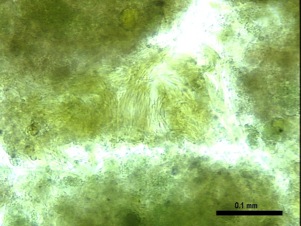


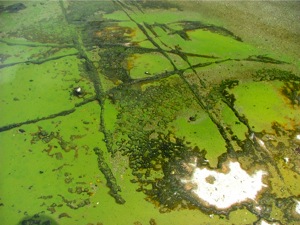


Tentative Identification:
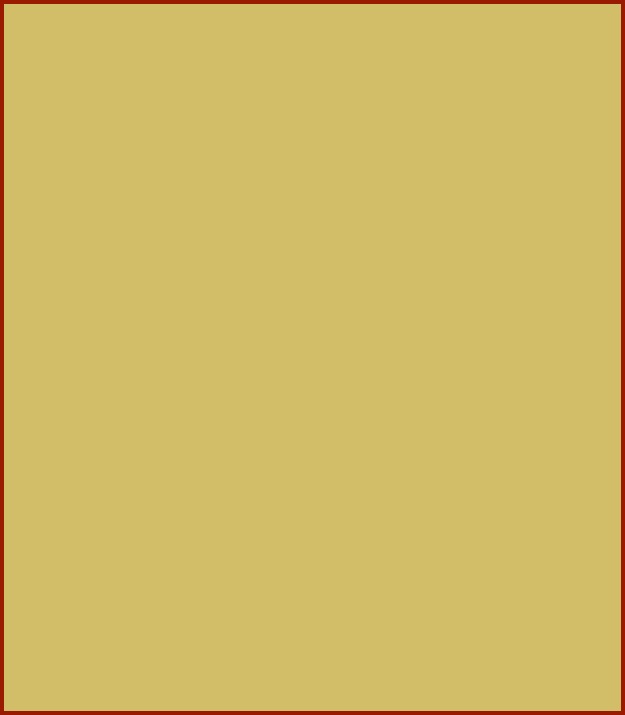
 M
M
This stuff was found at the surface of the water, was yellow-green, slimy in texture, and had large slime-covered bubbles (indicated in the top picture by a yellow arrow). In this picture the algae is at the water’s surface right above a spring. This sample is dominated by small green spheres, with occasional filaments, corkscrews and, as pictured above, diatoms.



Temp: 42.8 °C

Na+: 7500 ppm

pH: 10.2

K+: 86 ppm

Tentative Identification: Aphanocapsa or Nannochloris?

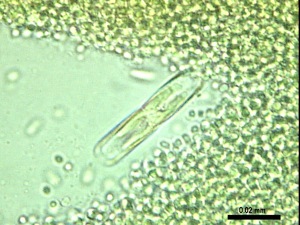

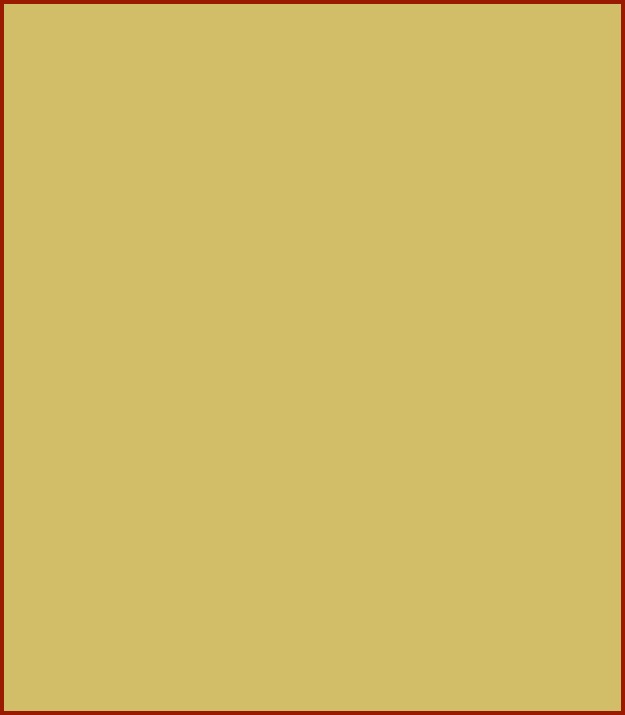

This red algae was found right at the mouth of a small spring, and was almost covered by green algae. In 2005, when it was wetter, the red patches were much larger in area. I have a feeling that the distribution of the different spring critters changes during the seasons.



Temp: 41.8° C

Na+: 7500 ppm

pH: 10.3

K+: 86 ppm

Tentative Identification:
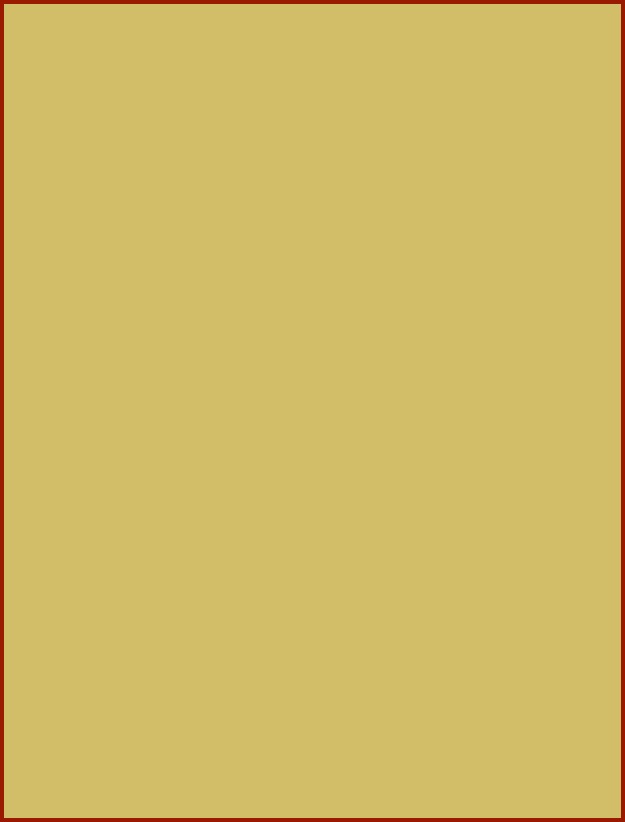

This was found covering a small pebble, was overall a kind of purple color, and was almost This sample had some fibrous red cells like in A3 above, but is mostly dominated by spherical/oblong green and red cells. Additionally there were some spirulina and



Temp: 43.4 °C

Na+: 7500 ppm

pH: 10.3

K+: 82 ppm

Tentative Identification: Spirulina subsalsa
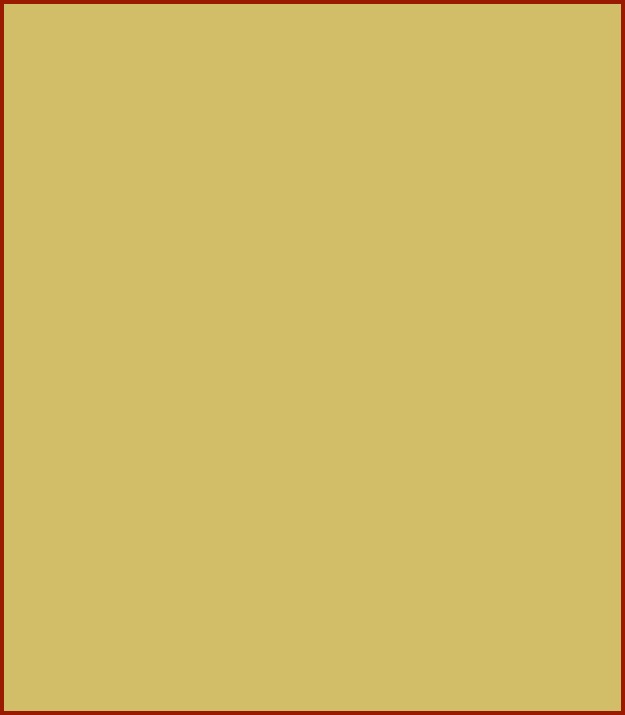

In the field, these were growing as a dark green mat/pillars right neat a hotspring outlet. They had a gritty texture and seemed to be the only type occupying this area. The same variety seemed to be in other, mostly bare areas with fine gravel substrate near or in hotspring outlets.
This was a hard sample to look at due to all the detrital material caught up with the biologic sample (it made the cover slip not want to lay flat). The overall red color might be from inorganic (iron?) material, and as for the biology there seemed to be several layers (which also made viewing difficult). There were green ovals, as seen above, and a layer of rod-like cells in the densest part of the sample.



Temp: 44.4°C

Na+: 7900 ppm

pH: 10.2

K+: 90 ppm

Tentative Identification:
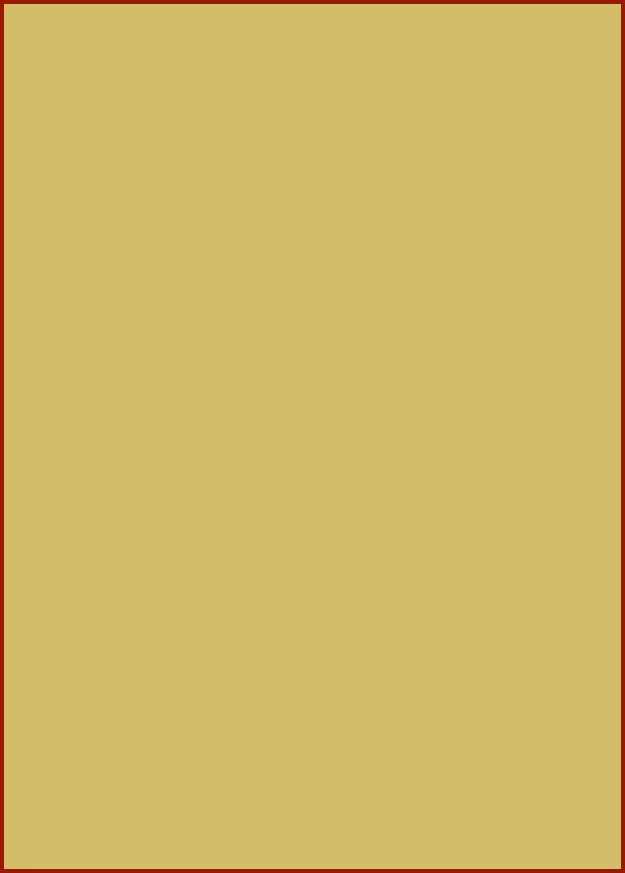

This stuff can be found growing all around the weaker springs and seems to have little or no competition from other algae. It has a distinctive red-brown color, but it was noticed that my sample may have bleached while in storage. The tips were white, and colorless under the scope, and the rest was green. Most of the cells are are green spheres, and there are a few rods concentrated in hair-like masses.



Temp: 34.8 ° C

Na+: 8250 ppm

pH: 10.4

K+: 100 ppm

Tentative Identification:

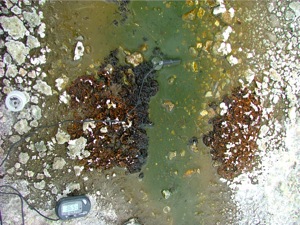

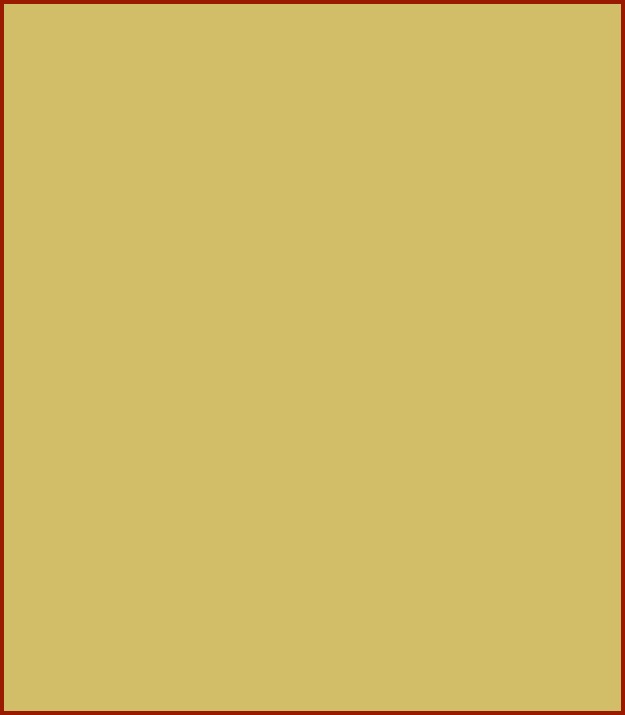

Near the salt ponds there was a fresher bond that was full of this green floating algae, and the water itself was a green color. Under the scope the vast majority of the cells were featureless green spirals but there were small clumps of spheres in addition to a few spirals that were composed of spherical segments.



Temp:

Na+:

pH:

K+:

Tentative Identification: Spirulina

